De Luxe Driver - 1939 Chevrolet Master De Luxe
With its unique fold-down rear seats, Chevrolet's 1939 four-passenger Coupe had style, craftsmanship and reliability
09/22/2018


On October 22, 1938, just 11 months before the outbreak of World War II, 10 months before the release of the Wizard of Oz and only eight days prior to Orson Welles's hysteria-inducing CBS radio broadcast of War of the Worlds, Chevrolet introduced its striking 1939 models.
The previous year's Master became the Master 85 for the 1939 model year, and the upscale Master De Luxe returned. A Master De Luxe two-door four-passenger coupe with rear opera (jump) seats was a new addition, as were Master 85 and De Luxe Station Wagons. Cabriolets and the two-door sport coupe with rumble seat were discontinued.
Despite significant exterior design revisions that resulted in a lower and wider appearance, prices of the 1939 models were actually lower than those of their comparative 1938 models--in some cases, up to $45. Chevrolet General Manager M. E. Coyle cited refinements in manufacturing and production processes, in addition to potential customer demand as the driving forces behind the reductions.
For 1939, the price variance between the Master 85 (JB body) and Master De Luxe (JA body) was approximately $35-$56 depending upon the style. Additional equipment, upmarket trim and engineering distinctions justified it. The Master 85 employed a traditional leaf-sprung I-beam front suspension with a ride stabilizer and double-acting airplane-type shocks, whereas the Master De Luxe utilized a more modern independent front suspension featuring upper and lower control arms, coil springs, double-acting end-to end discharge shocks and a ride stabilizer. The steering system was also a different design and featured a quicker 17:1 ratio in the De Luxe compared to 19:1. Though leaf springs were used in the rear of both models, in the De Luxe they were metal-wrapped and the shocks were double-action instead of single. And rear gear ratios were steep 4.22:1 over the 3.72 of the Master 85.
Inside, the Master De Luxe received mauve brown plastic control knobs instead of variegated brown ones. Other
De Luxe standard items included decorative doorsill plates, a silver stripe on the door moldings, leather-faced front seat armrests, ash receptacle and a water temperature gauge. The latter was optional in the Master 85. Outside, bumper guards, stainless steel running board moldings and "Master De Luxe" identification on the hood louvers dressed up the higher-line vehicle even further.
Model year total production for the Master 85's and Master De Luxe's baker's dozen of body variations was 587,177 units--over 116,000 more cars produced than the previous year's total of 470,766.
In late 2008, Ken Symonds of Jensen Beach, Florida, purchased our feature Master De Luxe, two-door, four-passenger, coupe--also referred to as an "opera coupe," thanks to its unique fold-down rear seats--to replace his 1933 De Soto, which was totaled in a trailering accident. Though in fairly poor overall condition, the maroon-exterior and mohair-interior De Luxe was complete and retained its original 216.5-cu.in. OHV straight-six engine, three-speed manual transmission and host of factory options.
Ken recalls, "I really liked the look of this Chevrolet and the fact that it has features, in addition to the rear jump seats, that further differentiate it from its closest sibling, the Business Coupe. Its rear quarter windows slide open, the Business Coupe's don't. Also, the fuel filler is on the passenger-side rear fender of the opera coupe, but it's on the passenger-side quarter-panel behind the door on the Business Coupe."
He bought it to participate in car shows and Antique Automobile Club of America tours, but before any of that could happen, Ken would put his decades of auto body experience to work to bring the Master De Luxe up to his standards.
Having retired to Florida in 1984 after owning Ken's Auto Body in New Jersey, for 19 years, he had the time and place, namely a nine-car garage built under his house, to work on his own projects.
In 2009, performing all of the work himself, the then-74-year-old removed the drivetrain and the bolt-on body parts from the De Luxe and relieved all the exterior panels of their paint via aviation stripper, followed by sandblasting. Two coats of PPG epoxy primer were applied, a patch was MIG welded into each quarter-panel behind the doors, the rear body panel under-trunk lid was replaced, and small areas of the trunk were repaired. Classic Chevy supplied the needed patch panels, as well as new running boards, and Chevs of the 40s would provide 90 percent of all the other parts required to restore the car.
Skim coats of Duraglas and Rage fillers were used as needed to smooth the body, and everything was block-sanded with 180-grade paper. After two more coats of primer, the body was block-sanded with 400-grade before a single coat of a PPG non-sanding sealer was applied. Next came five coats of PPG acrylic urethane in black, as Ken liked it better than the stock maroon. That was followed with three coats of clear. After wet sanding with a progression of grades up to 1500, the finish was buffed and polished using a 3M system.
Body brightwork was restored, the grille and bumpers were rechromed, and new hubcaps and trim rings were sourced. The exhaust tip and license plate frame are aftermarket.
Ken rebuilt the 216.5 cu.in. engine to mostly stock specs. Its block was honed and decked, the drop-forged steel crankshaft was cut .010/.010 and the 6.8-inch connecting rods were refurbished. Originally fitted with cast-iron pistons, the engine was upgraded to lighter cast-aluminum pistons during the rebuild.
The cylinder head was also decked to true its mating surface to the block, and new valve guides were installed for the 1.6-inch-diameter intake and 1.2-inch-diameter exhaust valves that operate in the "Blue Flame" combustion chambers. A stock replacement cam works with factory pushrods, and 1.477:1 ratio rocker arms, the Delco-Remy ignition system and Carter carburetor were rebuilt, and the stock intake and exhaust manifolds were repainted. A new 1.875-inch exhaust system, with a single muffler and a 1.75-inch tailpipe, was bolted in as well. Once the engine was reinstalled, the Harrison ribbed cellular copper radiator and four-blade fan were mounted.
A 9-inch single dry-plate clutch connects the engine to the three-speed manual, "silent second" (synchromesh on second and third gears) transmission. Though it has yet to be rebuilt, Ken says that first gear does growl a bit. The semi-floating hypoid rear only required new axle seals.
The frame and some suspension components were painted with durable chassis black enamel, and the independent front suspension was rebuilt with stock replacement parts--kingpins and control arm bushings, etcetera. Front shocks, steering system and the rear leaf-springs were restored, and the rear shocks were serviced. The 11-inch drum brakes were also completely refurbished.
Ken recalls, "After asking a shop about restriping my hubcaps and receiving a high price, I decided to do it myself. I used a five-gallon bucket that was the correct diameter, and I cut it down to 2 inches high. I placed it over the wheel, fine-line taped around it to get the outside diameter then removed it and taped inside the first circle to get the inside diameter. Then I painted the gap between the two tape circles."
Inside, the mohair velvet upholstery was supplied by Hampton Coach. Ken installed it and performed all the other restoration tasks except for restoring the De Luxe steering wheel. That was left to a professional. After becoming frustrated with an expensive woodgraining kit, he taught himself how to replicate the appearance on the instrument panel using a paintbrush and stain. "I got some instruction regarding the technique from the salesperson at the hardware store. I practiced first and then tried it, and the result looked really good."
The 6-volt electrical system received all new wiring, and the headlamps were upgraded to sealed beams for better night vision since this old Chevrolet was going to see lots of road time. As a precaution, each headlamp has its own relay for the high beam and low beam, so as not to overtax the electrical system.
Speaking of road time, from behind the wheel, Ken relates, "My 1939 Chevrolet drives great. I just have to remind myself to use the clutch. Many times, I double clutch to avoid grinding gears when shifting into second at moderate RPM. The clutch action is smooth, with no chatter, and though shifter throw is quite long, it's not objectionable. Engine power is respectable for its size and design.
"The seats and overall driving position are very comfortable. It takes a little time to get accustomed to the large 17.3-inch steering wheel, but instrument visibility is good through it, and its size makes steering effort low when the car is moving. At low speeds, it handles well, but when going faster, I must slow down for corners. It has a little play in the steering, and the bias-ply tires tend to follow grooves in the road, but the Chevrolet rides much better than my De Soto because it has independent front suspension. Though they don't pull or lock up, the brakes feel a bit mushy, so I usually downshift to help stop the car."
Ken added aftermarket outside rear-view mirrors, and to reduce the three-quarter rear blind spot, he glued a convex mirror into the frame on the passenger's side and reports that it helps a lot.
Once the Master De Luxe was completed in 2010 and had won its AACA Junior and later its Senior awards, Ken began driving it regularly. With that road time came a few additional maintenance rituals to ensure that his Chevrolet remains in peak operating condition and is show-ready.
He says that he uses Amsoil with a high-zinc formulation because he previously had a valve hang up that caused some unscheduled engine work. About 5 ounces of Marvel Mystery oil are added to every 5 gallons of gas to also help keep the valves lubed. 3M wax is employed on the exterior finish and he wraps tape around his hand--sticky side out--to lift lint from the mohair velvet upholstery.
Though Ken also currently owns a 1946 Chevrolet truck and a 1950 fastback, the now 80-year-old says, "My 1939 Chevy is just perfect for old-car tours, and I like to participate in them as often as possible."
Owner's View
Everything was there when I bought my 1939 Chevrolet, but it was in sorry shape. I started the restoration in 2009, and in 2010, it took its first Junior award in AACA competition. Senior came the next year. It has about 2,000 miles on it since the restoration, and wherever it goes, it seems that everybody just loves the car and they can't admire it enough. I guess so many were street-rodded and cut up over the years that seeing a stock 1939 Chevrolet has become a real rarity. Regardless of the reason, I appreciate the attention that it gets.
1939 CHEVROLET MASTER DE LUXE
SPECIFICATIONS
PRICE
Base price: $715.00
Price as optioned: $761.75
Options (on car profiled): Electric Glove Compartment Clock, $9.95; Fender Lamps (parking lights), $6.00; Double-Duo Horns (city and country horns), $9.50; Wheel Rings (trim rings), $6.95; No Roll Device (not currently on the car but came with it), $7.95; Grille Guard, $2.50; passenger-side windshield wiper, $3.90
ENGINE
Type: OHV six-cylinder, cast-iron block and cylinder heads
Displacement: 216.5 cubic inches
Bore x Stroke: 3.50 x 3.75 inches
Compression Ratio: 6.25:1
Horsepower @ RPM: 85 @ 3,200
Torque @ RPM: 170-lb.ft.@ N/A
Valvetrain: Mechanical valve lifters
Main Bearings: Four
Fuel System: Carter one-barrel carburetor, mechanical pump
Lubrication System: Pressure; gear-type pump
Electrical System: 6-volt
Exhaust System: Single
TRANSMISSION
Type: Three-speed manual, synchromesh, floor shift
Ratios: 1st: 2.94:1
2nd: 1.68:1
3rd: 1.00:1
Reverse: 2.94:1
DIFFERENTIAL
Type: Hypoid drive gears; open
Ratio: 4.22:1
STEERING
Type: Worm and ball-bearing roller sector
Ratio: 17.5:1
Turning Circle: 41-feet
BRAKES
Type: Hydraulic; four-wheel drum
Front/rear: 11 x 1.75-inch drums
CHASSIS & BODY
Construction: All steel; separate body and frame, Fisher Turret Top with sloping-vee windshield
Frame: Boxed girder with flanged box-section side rails and crossmembers
Body Style: Two-door coupe
Layout: Front engine, rear-wheel drive
SUSPENSION
Front: Independent; unequal-length control arms, coil springs, double-acting hydraulic shocks, anti-roll bar
Rear: Solid axle; semi-elliptical leaf springs, threaded shackles, metal spring covers, double-acting hydraulic shocks
WHEELS & TIRES
Wheels: Steel
Front/rear: 16 x 4 inches
Tires: Coker 4-ply, bias-ply
Front/rear: 6.00 x 16 inches
WEIGHTS & MEASURES
Wheelbase: 112.25 inches
Overall Length: 188 inches
Overall Width: 71.3 inches
Overall Height: 66.3 inches
Front Track: 57.5 inches
Rear Track: 59 inches
Shipping Weight: 2,845 pounds
CAPACITIES
Crankcase: 5 quarts
Cooling System: 14 quarts
Fuel Tank: 14 gallons
CALCULATED DATA
Bhp per cu.in.: .392
Weight per bhp: 33.47 pounds
Weight per cu.in.: 13.14 pounds
PRODUCTION
Four-passenger coupe: 20,908
PROS & CONS
+ An affordable collectible
+ Classic styling
+ Upscale model
- Not very rare
- Not overly valuable
- Limited accommodations for rear passengers
WHAT TO PAY
Low: $4,000 - $8,000
Average: $11,000 - $14,000
High: $18,000 - $22,000
CLUB CORNER
Vintage Chevrolet Club of America
P.O. Box 609
Lemont, Illinois 60439-0609
www.vcca.org
708-455-8222
Membership: 8,000
Dues: $40/year
Antique Automobile Club of America
501 W. Governor Rd
P.O. Box 417
Hershey, Pennsylvania 17033
www.aaca.org
717-534-1910
Membership: 55,000
Dues: $35/year
On this episode of Repair2Rev, join us as Riley and Dane share invaluable tips and tricks on tackling one of the most crucial aspects of vehicle maintenance: the brakes. From the essential do's and don'ts to the step-by-step process of replacing and upgrading front disc brakes, you'll learn everything you need to know to keep your ride safe and reliable.
As they move to the rear of the truck they delve into the intricate world of rear drum brake systems, demonstrating the art of rebuilding and restoring this often-overlooked component of classic trucks. And to ensure your truck stops on a dime, they'll wrap up the episode with a comprehensive guide to bleeding the brake system, leaving no stone unturned in their quest for peak performance. Knowledge gained here will help you find your bargain buy without the anxiety of lacking repair tips. Hemmings is the ultimate destination for finding your perfect ride. Head to Hemmings.com to register and start your search today.
The British motor industry is well represented on this week’s round up of successful sales on Hemmings.com. The strongest listing went to an LS V8-powered 1997 Land Rover Defender 110 custom that outperformed the market and looked to be able to well outperform a stock 110. A 1978 Aston Martin AM V8 found a new home via auction, the same fate experienced by a V12-powered 1972 Jaguar XKE Series 3 roadster. The original Jeep Grand Wagoneer was perhaps the first luxury SUV and the 1988 example sold on Hemmings.com featured low-mileage and excellent overall condition. There are few muscle cars are instantly recognizable as a Carousel Red Pontiac GTO Judge, like the 1969 model detailed below. Finally, we look at a restored 1913 Ford Model T Runabout sold from a Canadian-based collection.
For the week of May 12 through May 18, a total of 61 listings crossed the Hemmings Auctions block. Including Make Offer listings of previously ended auctions, a total of 40 cars were sold, resulting in a net 66% sell-through rate. An additional 29 cars were sold via direct Make Offer listings.
You can keep abreast of the latest consignments by subscribing to the daily Hemmings Auctions email newsletter.
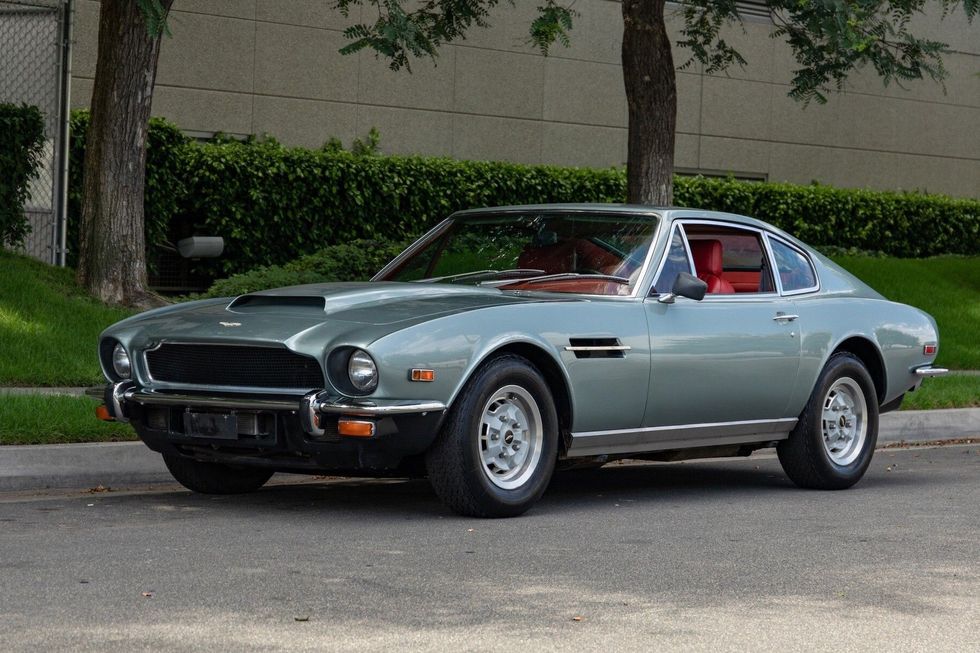
Reserve: $80,000
Selling Price: $84,000
Recent Market Range: $45,000-$80,000
Aston Martin produced some version of its V8-powered saloon from 1969 through 1989, though we are more likely to refer to the body style as a coupe on this side of the Atlantic. A beefy 5.3-liter DOHC V8 with multiple carburetors and a stout Chrysler-sourced TorqueFlite automatic very much gave the models a muscle car vibe, albeit one made with fine leather upholstery and thick wool carpets. This silver on red 1978 Aston Martin AM V8 Series III saloon, which traded hands last year via online auction for $46,988, achieved one of the highest prices seen in recent years for a coupe equipped with a standard-specification engine, particularly outside the U.K., where values are typically stronger.
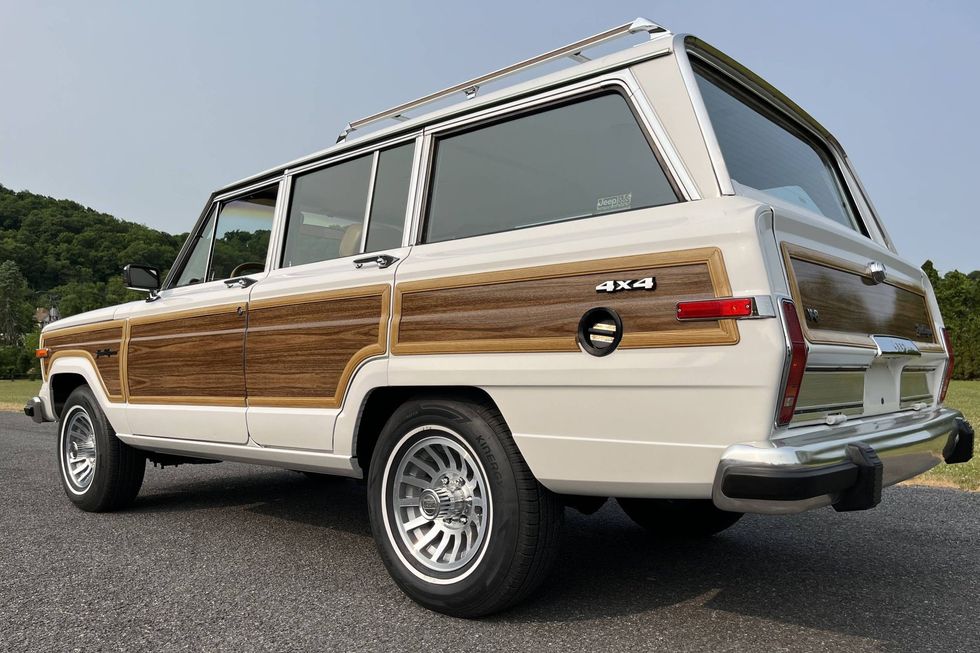
Reserve: $63,000
Selling Price: $68,775
Recent Market Range: $54,000-$75,000
Perhaps no other American vehicle has combined class and off-road capability quite like the original Grand Wagoneer, the trailblazing luxury SUV that was produced by Jeep for almost three decades. This 1988 Jeep Grand Wagoneer was submitted with just 27,417 miles showing on the odometer and plenty of notes from the seller indicating the original condition of the vehicle and all of its major components. The undercarriage, interior and engine bay photos all appeared to show an exceptionally clean example, which is notable for a rust-prone vehicle that has been in the Northeast since new. The net sale price, achieved with the 39th bid, was in line with market expectations for this very collectible vehicle.

Asking Price: $150,000
Selling Price: $157,500
Recent Market Range: $80,000-$150,000
The Land Rover Defender market shows no signs of slowing down, particularly as more and more examples are allowed into the U.S. via the DOT’s 25-year rule for previously banned imports. Likewise, there is a burgeoning market for what can best be described as restomodded examples, like this 1997 Land Rover Defender 110, which was powered by a modern GM LS3 V8, the same powerplant found in later C6 Corvettes. The list of what was original to this SUV might be shorter than what was changed, given the comprehensive nature of the build. Achieved via a direct Make Offer listing, the net sale price of this Land Rover was at the very top end of recent market activity for such customized Defenders.
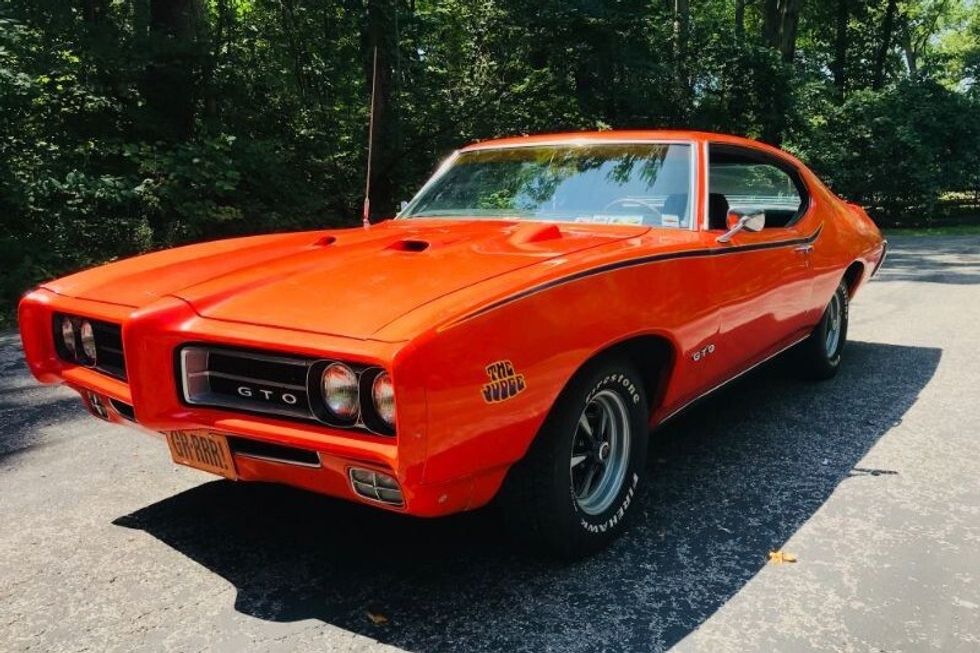
Reserve: $54,000
Selling Price: $52,500
Recent Market Range: $46,000-$62,000
This 1969 Pontiac GTO Judge ticked all the right boxes: matching numbers with photos verification of the partial VIN stamping on the engine block of the original Ram Air III V8, Muncie four-speed manual transmission, PHS documentation, and that classic Carousel Red finish and Judge decals. It looked to be in excellent overall condition, but it also appeared to have been driven and enjoyed some in recent years, with some signs of wear. And the net sale price, achieved via post-auction Make Offer listing, reflected the condition and authenticity of the car. A concours-level example, or one with a rare Ram Air IV engine for example, would likely command a premium over this one.
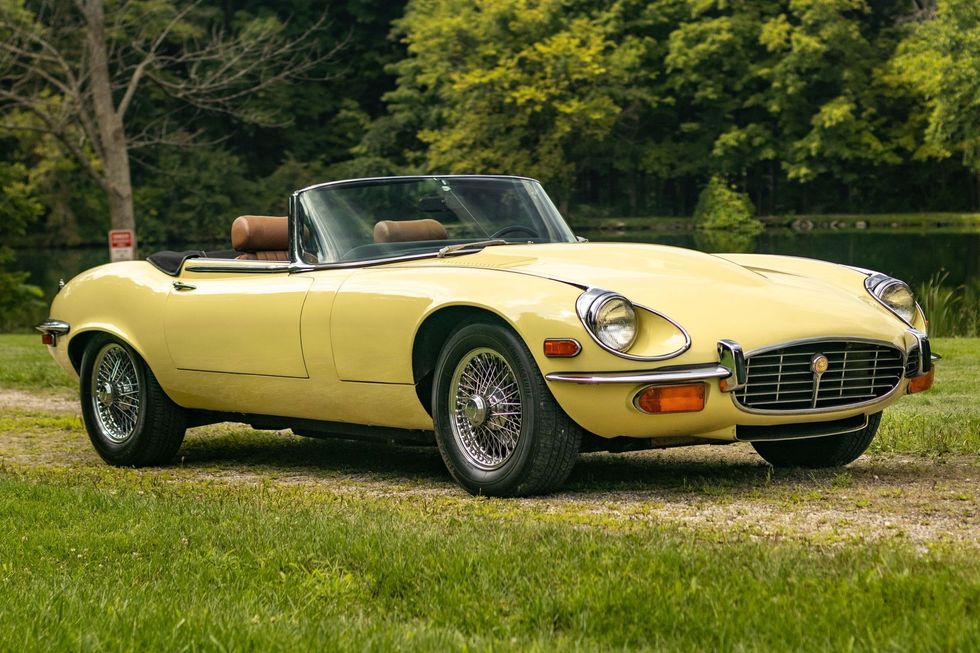
Reserve: $65,000
Selling Price: $69,825
Recent Market Range: $78,000-$115,000
The final iteration of the Jaguar XKE was a bit larger than the original and not as precisely focused on its sporting nature. Rather, with a big V12 under the hood, it was more of a GT car. This 1972 Jaguar E-type Series III Roadster appeared to have some minor wear and tear and signs of road use, but it made up for any shortcomings with what appeared to be an abundance of authenticity. The seller noted that the exterior finish, interior upholstery and engine were all original. Reflecting the low number of owners and the car’s years sitting in a museum, the odometer reading of just over 30,000 miles was also believed accurate. While the net sale price was below market expectations, it was not too far off.
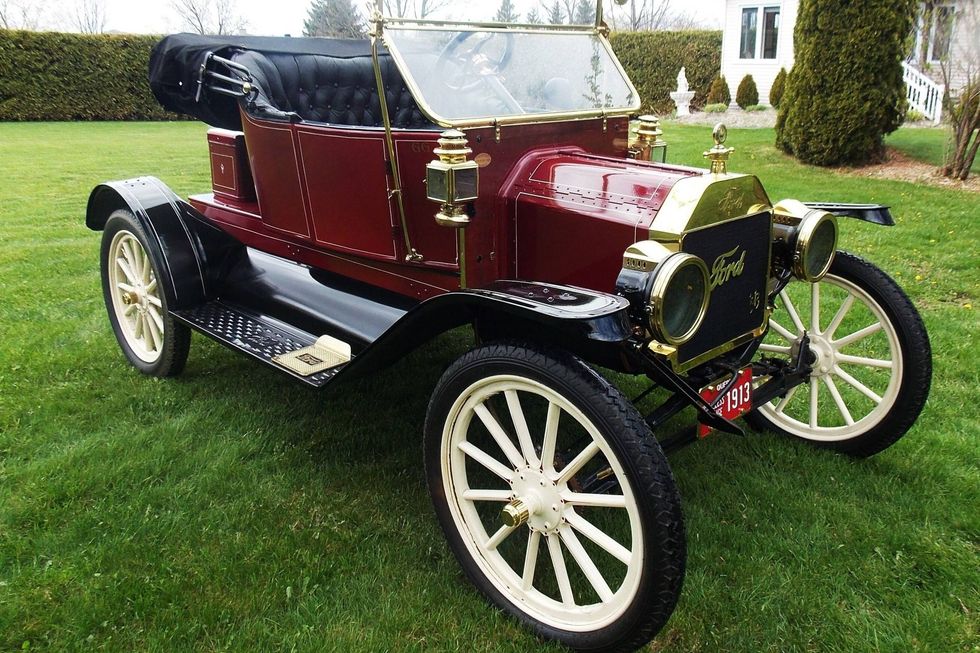
Reserve: $25,00
Selling Price: $26,250
Recent Market Range: $22,000-$36,000
There has never been a shortage of early Fords at Hemmings, dating to the earliest days of our magazine. Like any other vehicle, the most desired examples in the best condition will always attract the bidders. This 1913 Ford Model T Runabout appeared to have been restored to high level and showed only minimal signs of use. It was also equipped with an electric starter. The maroon body, black fenders and white spoke wheels nicely complemented the button-tufted black vinyl seat. The undercarriage appeared to be exceptionally clean, indicating little use for the car that was said to come from a Model T collection. The next sale price was well within the going market rate for an open-top, two-seat, early Model T.